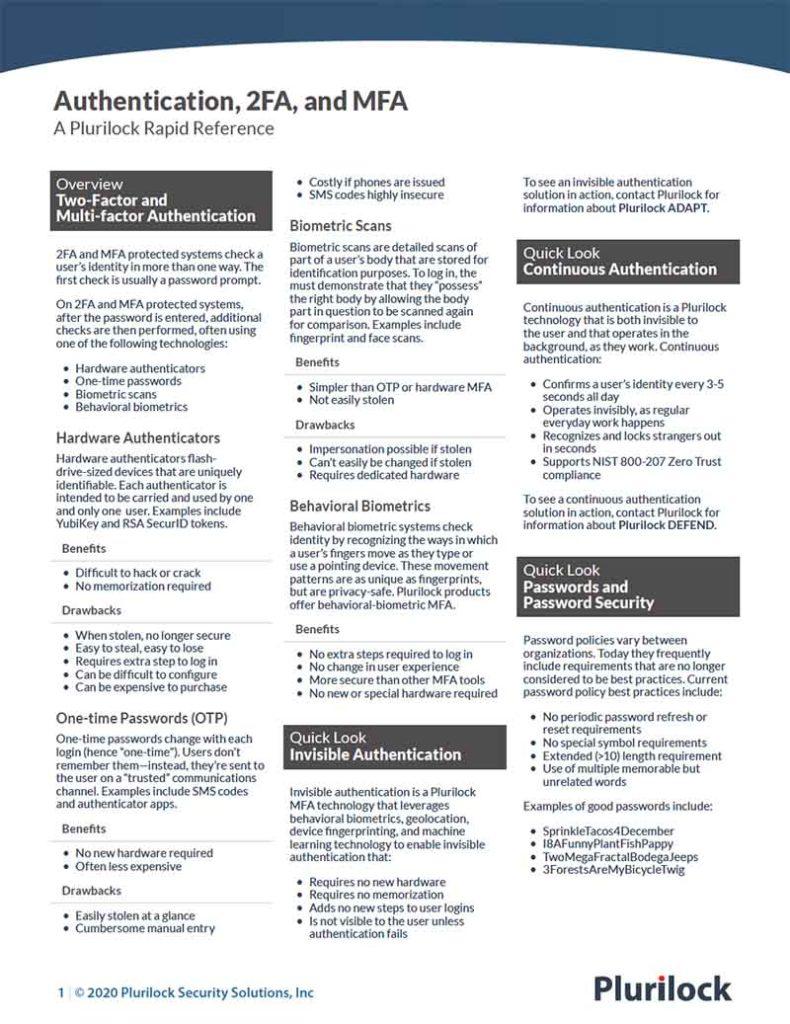Cybersecurity Reference > Glossary
How does Plurilock™ support my “zero trust” framework and environment?
Plurilock supports zero trust by enabling organizations to continuously authenticate users in the background, as they work.
Continuous authentication occurs as users interact with their endpoint or workstation during regular work activity, with identity re-verified every 3-5 seconds over the course of the workday. This eliminates periods of “trusted” computing that occur in between login or credential prompts. It also enables significant reductions in trust without the impediment to user productivity that login or credential prompts represent.
The results of these frequent background identity checks are also available via API or as signals for input into SIEM or database systems. They can be used either on an ongoing basis, to immediately lock endpoints on which unknown users appear, or to “spot check” the identity of a logged in user each time a high-risk action is attempted.

2FA/MFA Rapid Reference
Authentication at a glance
Download the 2FA/MFA Rapid Reference now:
- 2FA and MFA basics and common solutions
- The benefits and drawbacks of each
- Glossary of authentication terms
2FA/MFA Rapid Reference
- 2FA and MFA basics and common solutions
- The benefits and drawbacks of each
- Glossary of authentication terms















